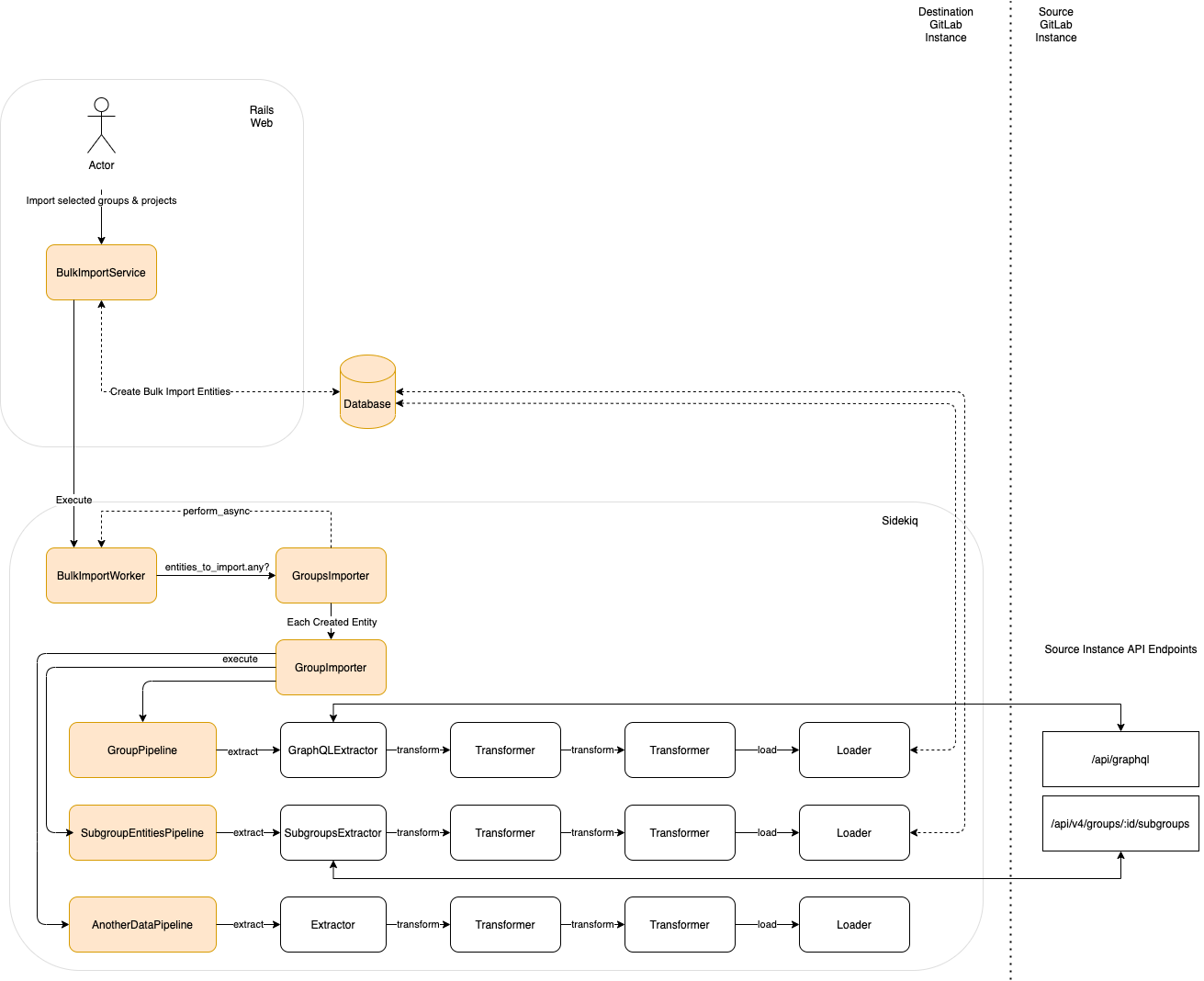Group migration by direct transfer
NOTE: To use direct transfer, ensure your GitLab installation is accessible from GitLab IP addresses and has a public DNS entry.
Group migration by direct transfer is the evolution of migrating groups and projects using file exports. The goal is to have an easier way for the user to migrate a whole group, including projects, from one GitLab instance to another.
Design decisions
The following architectural diagram illustrates how the Group Migration works with a set of ETL Pipelines leveraging from the current GitLab APIs.
ETL
ETL, for extract, transform and load, is a data integration process that combines data from multiple data sources into a single, consistent data store that is loaded into a data warehouse or other target system.
Using ETL architecture makes the code more explicit and easier to follow, test and extend. The idea is to have one ETL pipeline for each relation to be imported.
API
The current project and group imports are file based, so they require an export step to generate the file to be imported.
Group migration by direct transfer leverages the GitLab API to speed the migration.
And, because we're on the road to GraphQL, Group migration by direct transfer can contribute to expanding GraphQL API coverage, which benefits both GitLab and its users.
Namespace
The migration process starts with the creation of a BulkImport
record to keep track of the migration. From there all the code related to the
GitLab Group Migration can be found under the new BulkImports namespace in all the application layers.
Idempotency
To ensure we don't get duplicate entries when re-running the same Sidekiq job, we cache each entry as it's processed and skip entries if they're present in the cache.
There are two different strategies:
-
BulkImports::Pipeline::HexdigestCacheStrategy, which caches a hexdigest representation of the data. -
BulkImports::Pipeline::IndexCacheStrategy, which caches the last processed index of an entry in a pipeline.
